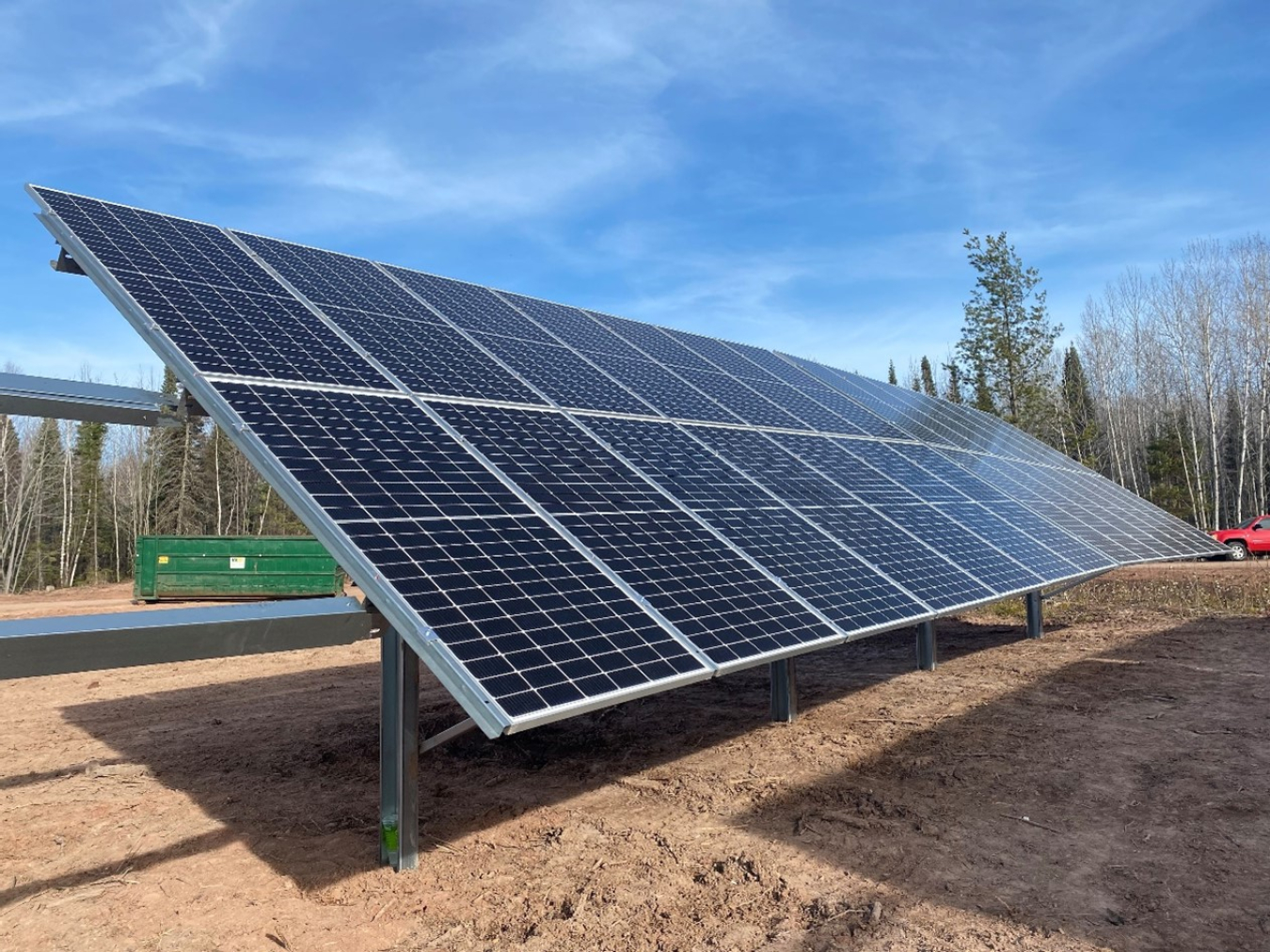Solar energy can play an important role in increasing the resilience of the nation’s grid and the communities served by the grid.
Solar Energy Technologies Office
September 29, 2022This blog post was originally published as an article in PV Magazine.
By: Garrett Nilsen, Deputy Director, U.S. Department of Energy (DOE) Solar Energy Technologies Office (SETO)

The completed Ishkonige Nawadide Solar Microgrid Project on the Bad River Reservation. Photo from Daniel Wiggins, Jr.
When it comes to power and electricity, you’ve likely heard the word ‘resilience’ used across the energy sector. At the Energy Department, that means a power system with the ability to prepare for and adapt to changing conditions and recover rapidly from operational disruptions.
Solar energy can play an important role in increasing the resilience of the nation’s grid. Instead of having one main generator that provides electricity for a large area, distributed solar energy systems—such as rooftops and community solar—can increase overall resilience of the grid and of the communities it serves.
Grid-based resilience
Power comes from a variety of sources—fossil-based generators fueled by coal or natural gas have been standard for the last century. Now, solar energy offers an affordable, low-cost electricity source well suited for a 21st century clean energy economy.
To enable solar to provide resilience, grid operators need tools like battery storage, demand management, and load shifting to ensure reliable power. The tricky part is understanding when to use those tools. That requires real-time knowledge of how much energy solar resources are producing at that moment, as well as how much energy they will produce in the future, known as forecasting. DOE recently completed the first Solar Forecasting Prize to help commercialize tools that will aid in predicting solar generation, and has also been investing in tools and models that continue to improve communications between solar generation facilities and grid operators so they have the accurate and timely information to do their jobs effectively.
DOE is also working to enable microgrids with large amounts of solar generation. These smaller grids, which often include renewable power like solar paired with battery storage, can disconnect from the main grid and operate autonomously when the main grid is down. Microgrids help to improve resilience of the overall grid by limiting the number of customers affected by an outage and enabling faster system response and recovery, reducing the threat posed by man-made or natural disasters and keeping communities safe and secure.
Grid-forming inverters, which automatically coordinate inverter-based and other resources to maintain electricity on the grid, are similarly important to grid resilience. These newer technologies require continual innovation and research, which is why we’ve created a consortium to UNIFI these diverse stakeholders. In the future, it is anticipated that grid-forming inverters will enable solar-plus-storage systems to restart the grid after disruptions without the assistance of more traditional forms of electricity generation.
Focus on communities
New research is expanding the definition of resilience to include the communities served by electric grid. Increasing the amount of solar energy on the grid and ensuring its affordability increases community resilience by helping to relieve energy burdens and provide clean, reliable, local electricity.
This idea of community energy resilience is a focus of our Renewables Advancing Community Energy Resilience (RACER) funding opportunity. Later this year, several projects will be selected for a total of $25 million in funding to support innovative community energy planning methods and technology demonstrations that can increase energy resilience in response to the impacts of climate change and extreme weather events. These events frequently cause widespread equipment failures and infrastructure damages, particularly in the distribution grids that directly serve communities.
Electricity powers vital services that are integrated into virtually every corner of our economy and communities: lighting at night for safety, communication services for emergency responders, refrigerated food and medication storage, and clean water and sewage disposal. To achieve far-reaching impacts, the projects under RACER will bring multiple stakeholders to the table—utilities, municipal planners, emergency responders, community groups, among others—to ensure the electric needs of all community members are considered.
The future of resilience
With the help of RACER and other DOE efforts, new and innovative approaches to community energy planning and new clean energy technologies will be developed to lessen the impact of power disruptions to essential services and increase the ability to withstand and recover rapidly from extreme weather events.
As the amount of grid-connected solar energy continues to grow, resilience at both the grid and community levels remains an important priority for the DOE. The Solar Energy Technologies Office is committed to researching and developing a resilient grid that can handle the increase of solar as we continue to transition to a decarbonized power system, while ensuring solar technologies improve the grid’s ability to keep the lights on.

